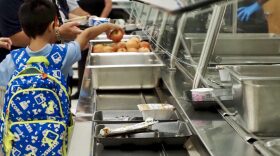Federal student loan borrowers are going to get some relief, thanks to the Biden Administration’s announcement Wednesday of partial debt forgiveness for student loans.
The administration is canceling $10,000 in federal student loan debt for Americans earning $125,000 or less per year or households earning $250,000 or less per year.
Biden is also extending the pandemic-era pause on loan payments — which were set to restart Sept. 1 — to Dec. 31. Social media messaging from the administration indicates this will be the “final time” the pause will be extended.
According to the U.S. Department of Education, 38.8% of Oklahoma federal student loan borrowers have less than $10,000 in debt, and of those, residents under the income cap will see their student debt wiped clean under the new policy. The average Oklahoma student loan borrower owes $31,525, and 12.3% of Oklahoma residents have student loan debt.
Federal student loan borrowers with undergraduate loans will also be able to cap their payments at 5% of their discretionary income. Current income-driven repayment plans generally cap payments at 10% of a borrower’s discretionary income. Under the new policy, no borrower earning under 225% of the federal poverty level will have to make a monthly payment.
Students who received Pell grants — which are funds specifically for low-income students — will receive an additional $10,000 in relief, for a total of $20,000 in debt forgiveness. The Biden administration contends 90% of the debt relief will go toward households earning $75,000 per year or less, though an analysis from researchers at the University of Pennsylvania concluded more than two-thirds of the relief would help people making over $82,400 a year.
Current students are only eligible for forgiveness if their loans originated before July 1, 2022.
While the policy only applies to borrowers currently holding debt, according to the Federal Office of Student Aid, borrowers who voluntarily made payments since the pause in March 2020 can request a refund for these payments by contacting their loan servicer.
Biden’s new plan would also forgive loan balances after 10 years of repayment, rather than 20 years, for borrowers with original loan balances of $12,000 or less. The Department of Education estimates this will allow borrowers from community colleges to be debt-free within a decade.
Unpaid monthly interest would also be covered. No borrower’s federal student loan balance will increase as long as they make their monthly payments. This includes people whose income is low enough to qualify for $0 monthly payments.
The announcement has been met with mixed reception. While Congressional Democrats have been pushing for student loan forgiveness for months, opponents say the new policy could exacerbate inflation. While still near a four-decade high, the consumer-price index slipped from 9.1% in June to 8.5% in July.
U.S. Congressman Tom Cole (R-OK) issued a press release decrying the new policy as a “terrible idea… meant to influence and energize younger voters on the eve of an election.”
“This move will add hundreds of billions of dollars more to the national debt, erasing any supposed deficit reduction and inflation relief recently touted and claimed by Democrats in their partisan reconciliation bill,” Cole said in the release. “It is completely unfair to those who have repaid their debts, paid for college on their own or decided not to go to college at all to avoid debt.”
While the move initially seems like it would cost the government about $300 billion or more, the real cost is smaller and tougher to calculate because much of that debt would’ve likely never been repaid — one in five borrowers with a payment due had defaulted on their loans before the pandemic.
Analysts saylegal challenges to the policy are almost certain to arise. A fact sheet detailing Biden’s plancan be found here.
StateImpact Oklahoma is a partnership of Oklahoma’s public radio stations which relies on contributions from readers and listeners to fulfill its mission of public service to Oklahoma and beyond. Donate online.








